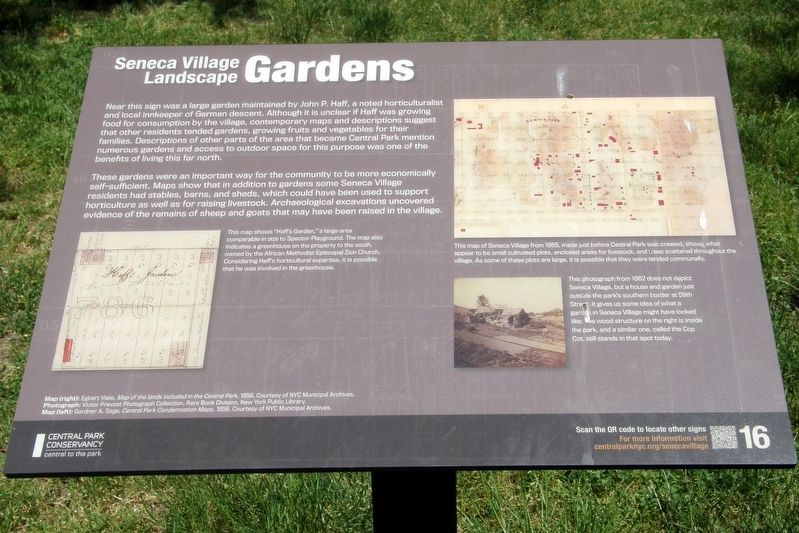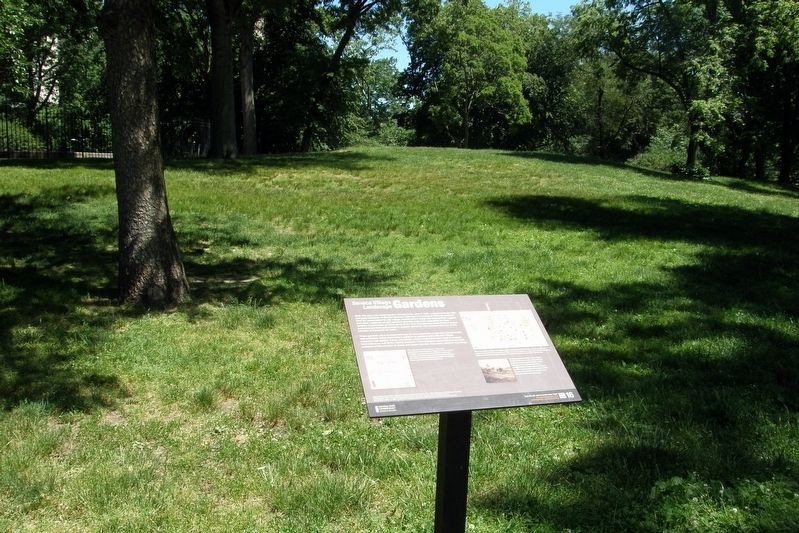Central Park West Historic District in Manhattan in New York County, New York — The American Northeast (Mid-Atlantic)
Gardens
Seneca Village Landscape
Near this sign was a large garden maintained by John P. Haff, a noted horticulturalist and local innkeeper of German descent. Although it is unclear if Hall was growing food for consumption by the Village, contemporary maps and descriptions suggest that other residents tended gardens, growing fruits and vegetables for their families. Descriptions of other parts of the area that became Central Park mention numerous gardens and access to outdoor space for this purpose was one of the benefits of living this far north.
These gardens were an important way for the community to be more economically self-sufficient. Maps show that in addition to gardens some Seneca Village residents had stables, barns, and sheds, which could have been used to support horticulture as well as for raising livestock. Archeological excavations uncovered evidence of the remains of sheep and goats that may have been raised in the village.
Erected 2020 by Central Park Conservancy.
Topics. This historical marker is listed in these topic lists: Horticulture & Forestry • Parks & Recreational Areas • Settlements & Settlers.
Location. 40° 47.045′ N, 73° 58.082′ W. Marker is in Manhattan, New York, in New York County . It is in the Central Park West Historic District. Marker can be reached from West 85th Street east of Central Park West. Touch for map. Marker is at or near this postal address: Central Park, New York NY 10024, United States of America. Touch for directions.
Other nearby markers. At least 8 other markers are within walking distance of this marker. African Union Church (a few steps from this marker); Seneca Village (a few steps from this marker); AME Zion Church (a few steps from this marker); Seneca Village Community (within shouting distance of this marker); Seneca Village Landscape (within shouting distance of this marker); Reservoir Keepers (within shouting distance of this marker); Searching for Seneca Village (within shouting distance of this marker); Andrew Williams (within shouting distance of this marker). Touch for a list and map of all markers in Manhattan.
Regarding Gardens. Like most Seneca Village sites, there are no physical remains or representations to be had.
Also see . . .
1. Seneca Village. Wikipedia entry (Submitted on June 26, 2021, by Larry Gertner of New York, New York.)
2. Seneca Village Site. Central Park Conservancy website entry:
Links to several related sub-topics (Submitted on June 26, 2021, by Larry Gertner of New York, New York.)
3. Seneca Village, New York City. National Park Service entry (Submitted on June 26, 2021, by Larry Gertner of New York, New York.)
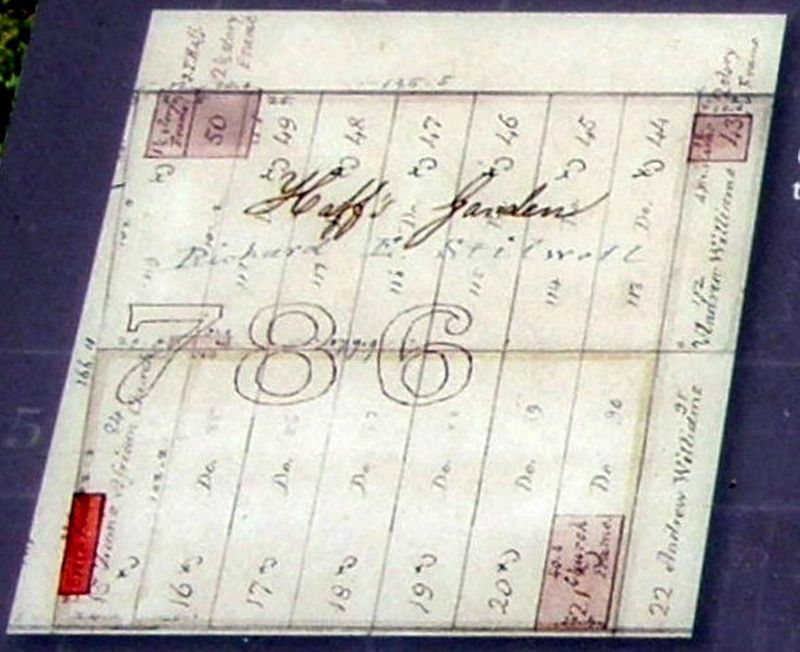
Photographed By Larry Gertner, June 17, 2020
3. Inset
This map shows “Haff’s Garden,” a large area comparable in size to Spector Playground. The map also indicates a greenhouse on the property to the south, owned by the African Methodist Episcopal Zion Church. Considering Haff’s horticultural expertise, it is possible that he was involved in the greenhouse.
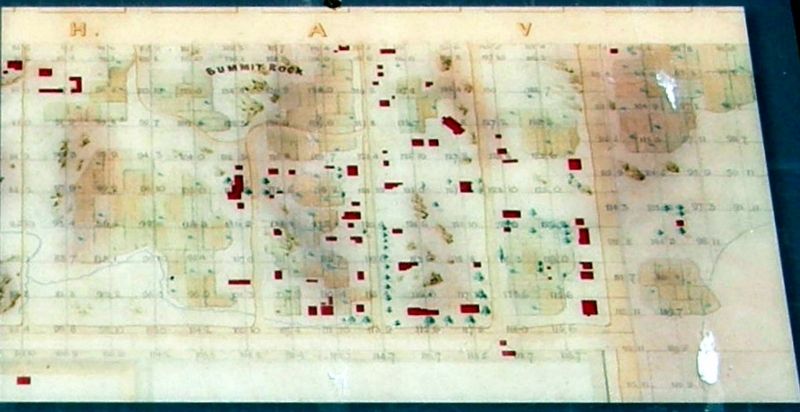
Photographed By Larry Gertner, June 17, 2020
4. Inset
This map of Seneca Village from 1855, made just before Central Park was created, shows what appear to be small cultivated plots, enclosed areas for livestock, and trees scattered throughout the village. As some of these plots are large, it is possible that they were tended communally.
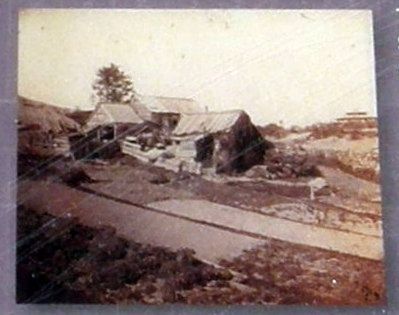
Photographed By Larry Gertner, June 17, 2020
5. Inset
This photograph from 1862 does not depict Seneca Village, but a house and garden just outside the park’s southern boundary at 59th Street. It gives us some idea of what a garden in Seneca Village might have looked like. The wooden structure on the right is inside the park, and a similar one, called the Cop Cot, still stands on that spot today.
Credits. This page was last revised on January 31, 2023. It was originally submitted on June 26, 2021, by Larry Gertner of New York, New York. This page has been viewed 160 times since then and 22 times this year. Photos: 1, 2, 3, 4, 5. submitted on June 26, 2021, by Larry Gertner of New York, New York.
